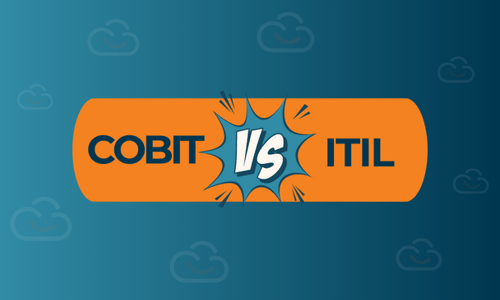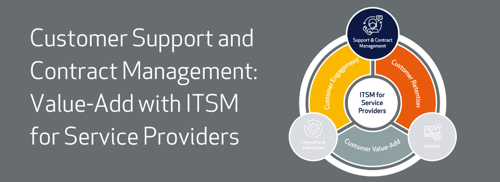Discover the key reasons why ITSM setups often fail within certain businesses and how such issues can be alleviated
Why ITSM Implementations Often Fail
There are many reasons why ITSM fails for some organisations, some obvious and some less so.
Despite a significant investment of time and resources, many ITSM projects fail to realise the benefits they were implemented to achieve—sometimes at a high cost to the organisation.
But what causes ITSM failure?
6 Reasons Why ITSM Fails
Reason #1: Lack of stakeholder buy-in
A successful ITSM project requires buy-in from a broad range of stakeholders—at a minimum:
- IT teams involved in providing services
- Leaders and financial personnel responsible for paying/budgeting for the project
- Suppliers of any tools or services required to deliver the project
- End users of IT services
If any of these groups doesn’t fully buy into delivering (or consuming) a project, the chances of ITSM failure grow exponentially.
The solution: From the outset, communicating the need for (and benefits of) an effective ITSM program to all audiences should be a top priority. Communication should naturally be tailored to the needs and expectations of each group. This is likely to require some significant education in some cases—particularly for end users—to ensure each group fully understands why the project is important and what they stand to gain from it.
Reason #2: Unclear or unrealistic objectives
The old saying “fail to plan, plan to fail” holds true for ITSM.
Many times, ITSM fails because there’s no clear, overriding objective. Project goals are often too vague, for example, protecting business continuity, improving user experience, or saving money. These are natural desires, but there’s no way to know whether you’ve succeeded or failed without clear planning and measurable goals. Worse, without clear, useful KPIs to measure against, there’s a good chance the project will be derailed and fail to achieve any of its objectives.
The solution is simple: determine precisely why the project is going ahead and design clear KPIs to help you track progress. For example, if the overriding objective is to protect business continuity, you can use metrics such as:
- Service availability (%)
- Time to Resolve (TTR) incidents
Only by tracking how your IT service performs before and after implementing a new system or service can you judge success.
Reason #3: Assuming you can plan everything in advance
It is possible to take planning too far.
Of course you should try to determine your requirements in advance. How else would you know what to aim for? But expecting that you’ll be able to plan everything in advance is overly optimistic. There will inevitably be needs and hurdles you didn’t anticipate, not to mention changing circumstances that affect your requirements. You must be able to identify and address these as they arise, or there’s a good chance your project will be derailed.
The key here is to remain flexible. If something comes up that you weren’t expecting, the project team should discuss it and review any changes required to account for it—including possible changes to timelines or KPIs.
If you do this consistently, you’ll substantially reduce the likelihood of ITSM failure.
Reason #4: Shunning continual service improvement
After a long and gruelling implementation, it’s natural to want to pat yourself on the back and mark the project ‘done.’ However, this temptation is among the most common reasons why ITSM fails to deliver on an organisation’s objectives.
ITSM is a journey, not a destination. It requires continuous work to add, refine, and improve services—otherwise, your program will gradually lose touch with the business’ needs and won’t be able to deliver the value you designed it for.
Simply, continual service improvement is a foundational tenet of ITIL—and without it, the whole framework gradually falls apart.
Reason #5: Poor technology choices
There is no objectively ‘best’ ITSM toolset for all applications. However, there are plenty of toolsets that—while excellent for some applications—are most likely ‘wrong’ for your needs. Part of your work in implementing a successful ITSM program is identifying a toolset that matches your organisation’s specific requirements.
To do this, you first need a clear understanding of your needs. This will require careful consideration and active involvement from stakeholders to produce a list of “must have” and “nice to have” capabilities, which you’ll use to assess potential toolsets.
However, don’t fall into the trap of assuming functionality is the only consideration. Choose a provider that you can partner with over the long term and rely on to provide support where needed to ensure your implementation succeeds.
Reason #6: Assuming a toolset is everything
An ITSM toolset doesn’t ‘do ITSM.’ It’s a tool that supports your organisation on its ITSM journey.
So while choosing the right toolset for your needs is crucial, no toolset can make up for a lack of resourcing, planning, and cross-organisational commitment. People are an equally important asset, and can be a point of failure if there is a lack of continuity in the project team, or a failure to fully retrain if original required skills are lost through team changes.
A Toolset Can’t Do Everything… but it Helps
Choosing the right ITSM tool—and technology partner—can be difficult. The market is saturated with options, and with hundreds of functionality points to consider, even telling the difference between different tools can be overwhelming.
At Sunrise, we pride ourselves on providing the highest quality ITSM customer experience available. We’ll help you understand your organisation’s needs, set clear objectives for your implementation project, and get you up and running in record time.
To find out how Sunrise can help your organisation achieve its objectives—and avoid costly ITSM failures—arrange a free demo today.




.png)
